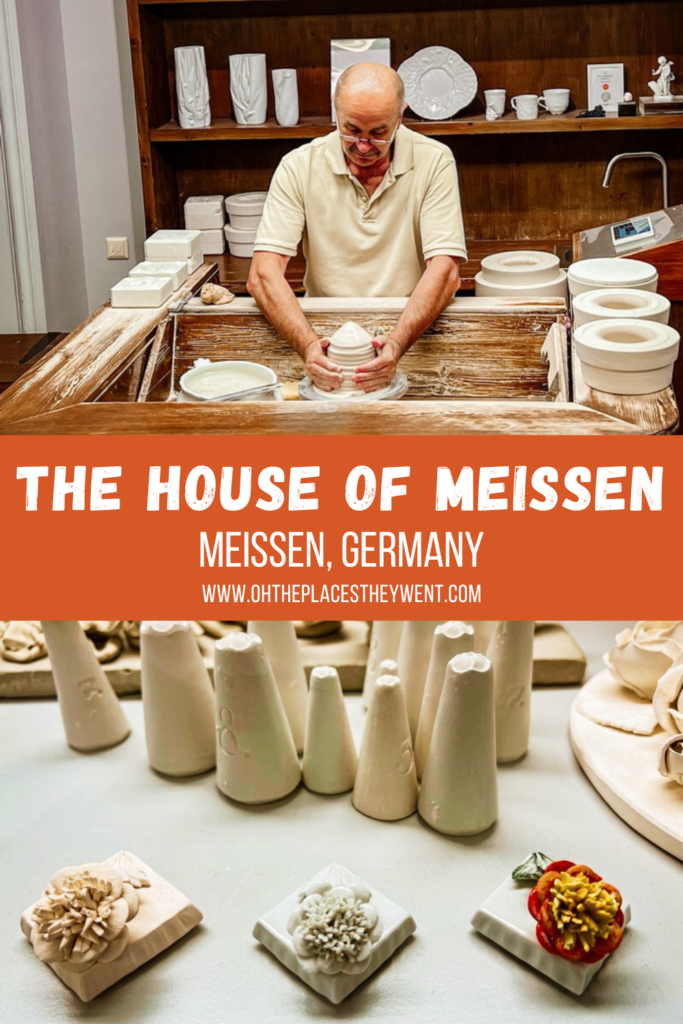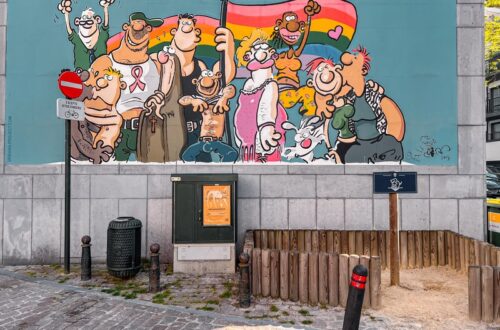The House of Meissen: Tour The Meissen Porcelain Factory and Buy Your Own Piece
I have become a little porcelain obsessed in the past few years. It all started when I got a beautiful Korean moon jar, we moved to the Netherlands and I visited Delft and learned about Royal Delft Blue, and the obsession continued when we landed in Meissen, Germany home to Meissen porcelain.
Like Royal Delft Blue, the House of Meissen offers a factory tour and production tour to learn how their exquisite pieces are produced and really, it’s a way to learn how to appreciate the craftsmanship on a deeper level. If you’re traveling to Meissen, it’s really a must visit. Get ready to see why.
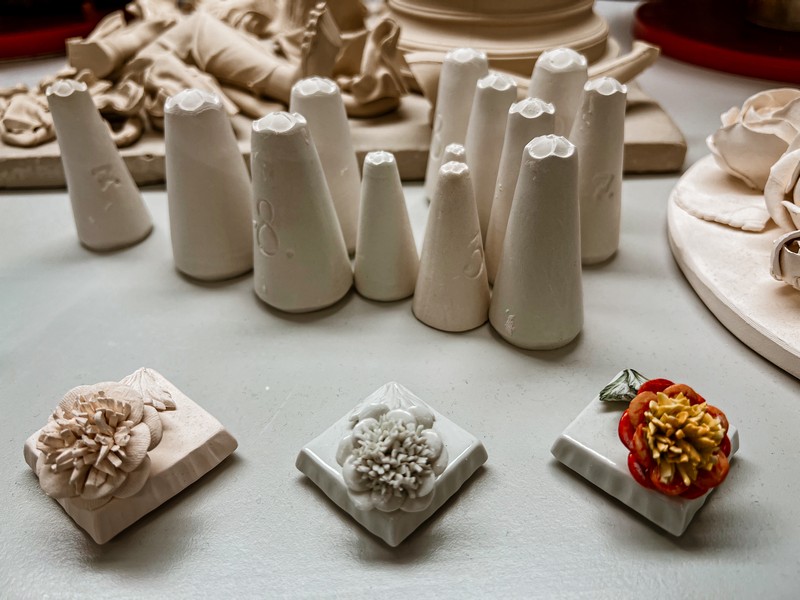
Did you know you can take a tour and learn how Meissen porcelain is made at the House of Meissen?
- The House Of Meissen: Basic Info
- Meissen Porcelain: Beginnings and Inscriptions
- The Meissen Porcelain Factory Tour
- The Meissen House Museum
- What Else To Do In Meissen
(This post contains affiliate links, which means I receive a certain percentage of a sale if you purchase after clicking at no cost to you. Thank you for your support.)
The House Of Meissen: Basic Info
- Address: Talstraße 9, 01662 Meißen, Germany
- Hours: Every day: 9:00am ~ 6:00pm
- Admission: Adults: Euro14; Children 6-18: Euro12; Children 0-5: Free
- The admission fee includes the audio guide and a walk through the workshop.

Meissen Porcelain: Beginnings and Inscriptions
Founded in 1710, Meissen was Europe’s first hard-paste porcelain manufacturer. Initially, to differentiate themselves from imitators and frauds, each piece was marked with a sequence of letters, which continued until 1730.
In 1722, Meissen’s famous blue crossed swords, a symbol taken from the Saxon ruler Augustus the Strong’s coat of arms, was established and this is what you’ll want to look for on authentic pieces today.
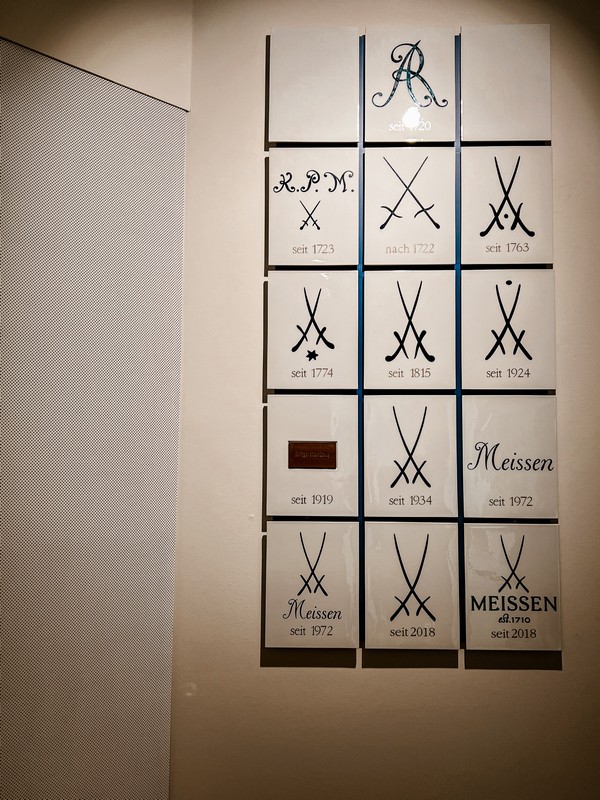
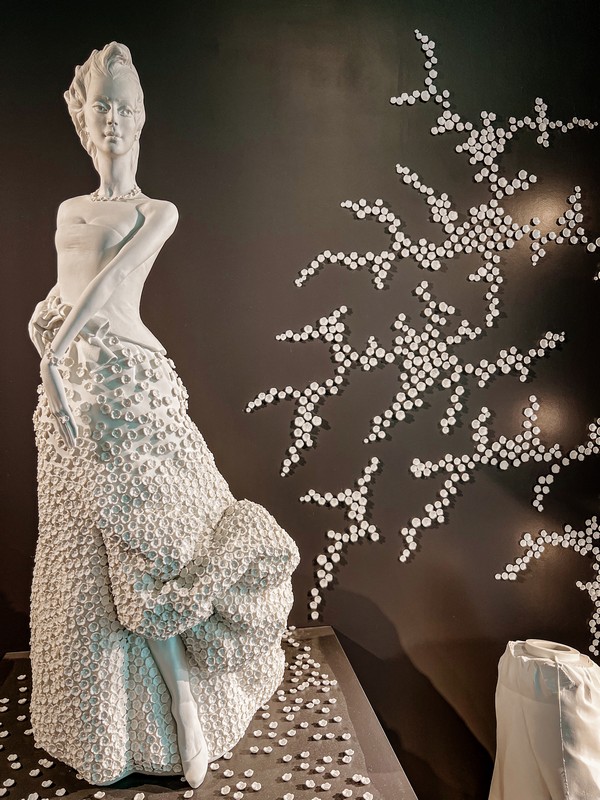
Be On The Lookout: While the crossed swords are what you want to look for today, Meissen also had the monogram “AR”—for “Augustus Rex”. These pieces were used by the court of Augustus as well as by the court of his son and successor. Gifts from the royal family to visitors also bore the AR inscription.

Today, almost every object Meissen has ever created is still in production. That’s 175,000 pieces!
Fun Fact: Our guide mentioned that a member of another group in weeks prior had visited looking for a particular Meissen piece for her collection. She couldn’t find it anywhere and it wasn’t even in the Meissen museum upstairs, but the staff at the factory looked through the book of Meissen originals, found what she was looking for and she was able to order it to be made on the spot. That is to say, Meissen can make pieces they aren’t currently producing just for you!
The Meissen Porcelain Factory Tour
Meissen porcelain is still created by hand employing only traditional techniques and visitors have the opportunity to walk through the workshops and museum to learn about Meissen porcelain and its creation.
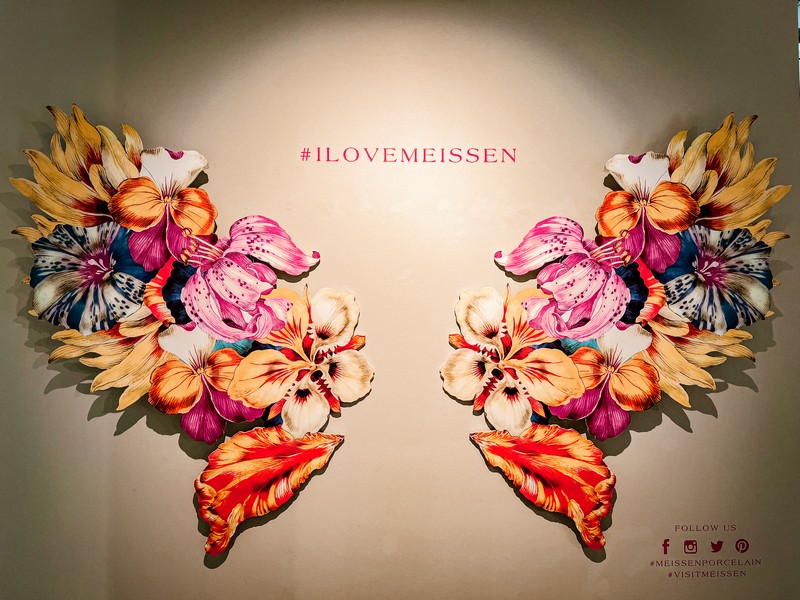
A Tour Through The Workshop
Overview: The demonstration workshop is a well planned and executed look into how Meissen porcelain is crafted. The entire experience is less than an hour and allows visitors a brief but informative opportunity to learn about what the craftsmen that create the porcelain do in a step-by-step process.
Audio Guides: There are audio guides available in 14 languages including: Chinese, Danish, English, Finnish, French, German, Italian, Japanese, Dutch, Polish, Russian, Swedish, Spanish and Czech. If the entire group speaks one language, like ours, then the information will be played on a speaker. And so the fun begins…

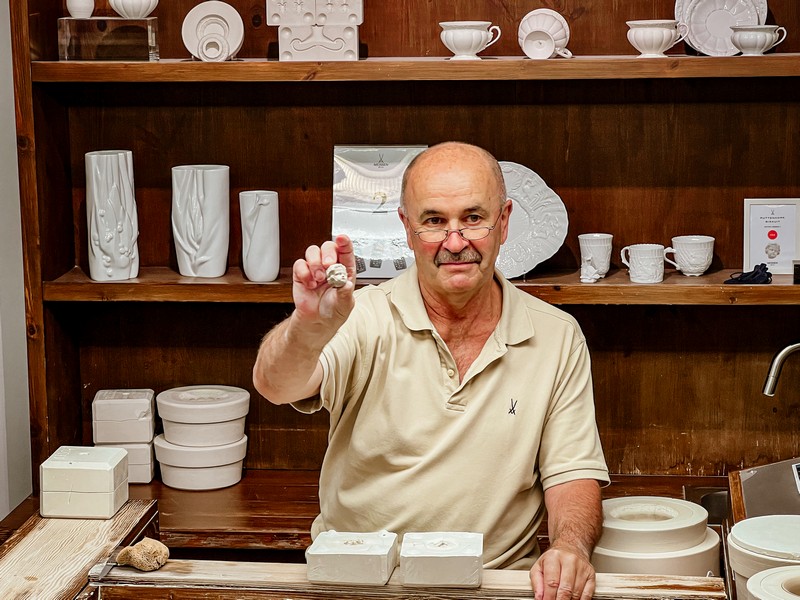
First Visit: The Potter
It was fascinating to see each round piece of Meissen porcelain come to life under the potter’s expert hands. The potter’s movements were precise and fluid, demonstrating years of practice and dedication. Unlike mass-produced porcelain, every single piece of Meissen’s collection is still crafted by hand.
This painstaking process ensures that each piece is unique and delicate. I learned that Meissen figurines and certain types of dishware are particularly intricate. These items are composed of multiple parts, each individually formed or molded. Once dried, these pieces are carefully assembled by the skilled embossers, bringing the final product to life.
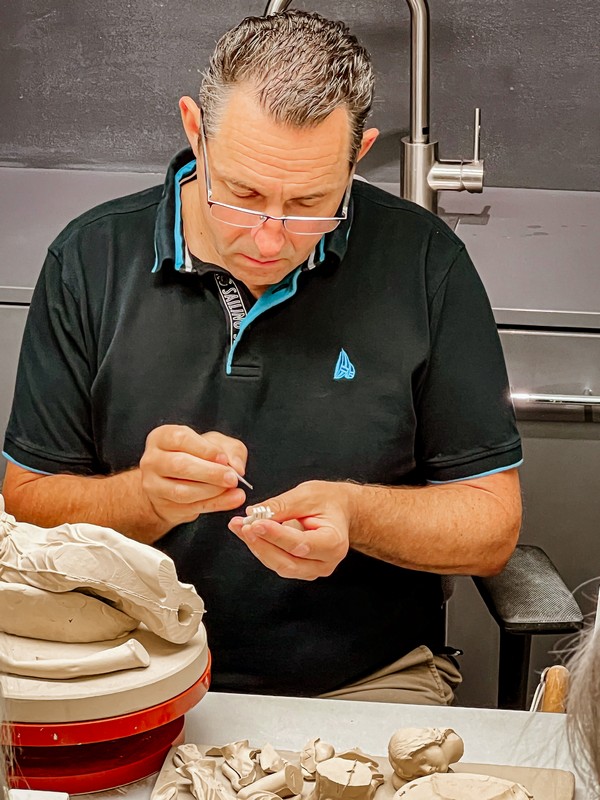
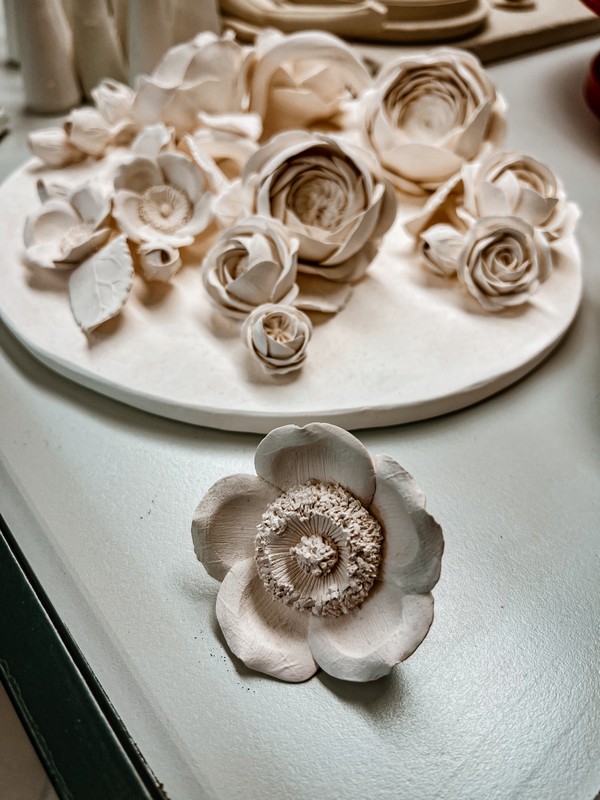
Second Stop: The Embosser
These artisans are responsible for assembling a multitude of individual components into a single figurine or statue. They use a slurry, a liquid porcelain paste, with incredible skill and precision to piece everything together.
I watched in awe as they formed smaller decorative elements like leaves, flowers, and scallops by hand using wooden molds. These delicate parts were then meticulously attached to the figurine in the final assembly stage. The embossers used various tools to perfect the details, from individual ringlets of hair to the nuanced expressions on the figurines’ faces. They also retouched all the seams, ensuring a seamless finish.
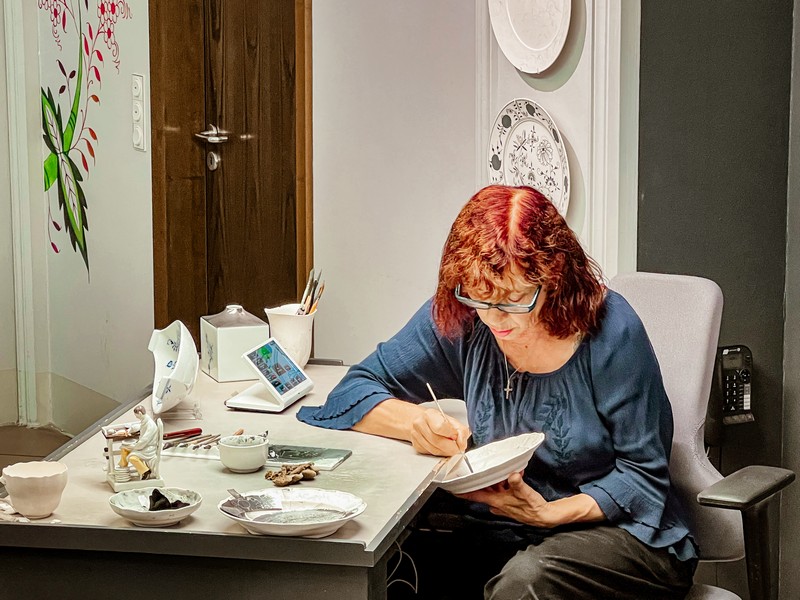

Third Space: Under-Glaze Painting
At this stage, the porcelain is hard enough to be handled but still has a porous surface. This is when the delicate art of under-glaze painting takes place.
Our guide explained that the range of colors available for under-glaze painting is quite limited. This is because only a few pigments can endure the incredibly high temperatures required for the second, or glost, firing. Even with a limited palette, the artists can create intricate and beautiful designs, knowing that their colors would hold true through the intense heat of the next firing stage.
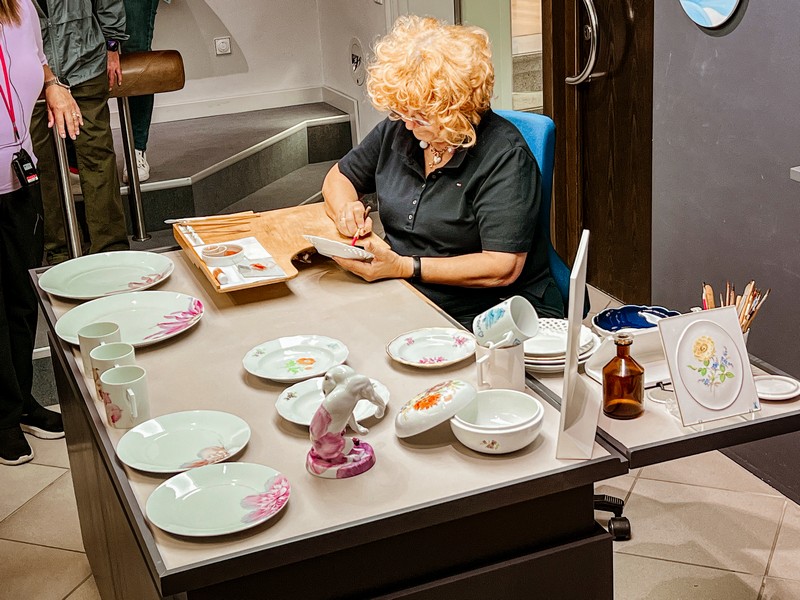
Fourth And Final: On-Glaze Painting
The artisans at Meissen mix colored powders with turpentine to create their paints, which they then meticulously apply to the porcelain.
I learned that creating complex designs often requires multiple firings and layers of paint. The range of decorative motifs is vast, from flowers and blossoms to figures, landscapes, animals, and fruits. Because of this diversity, each Meissen porcelain painter specializes in a particular area, mastering their unique designs.

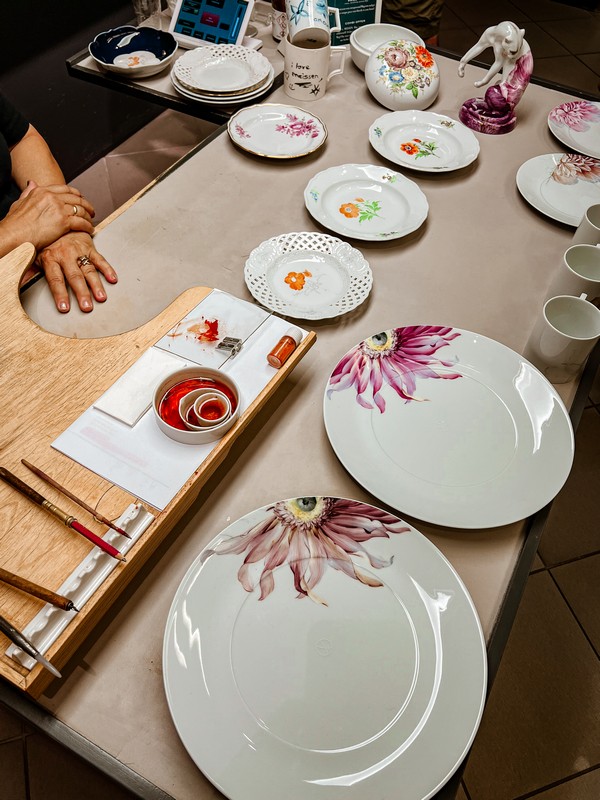
To ensure the artistic authenticity of each piece, painters use models and templates. The colors themselves are based on formulas from Meissen’s paint laboratory archives, preserving the traditional hues that define their work.
The final decorative firing brings out the true brilliance of the glaze paints, making each piece a vibrant work of art.
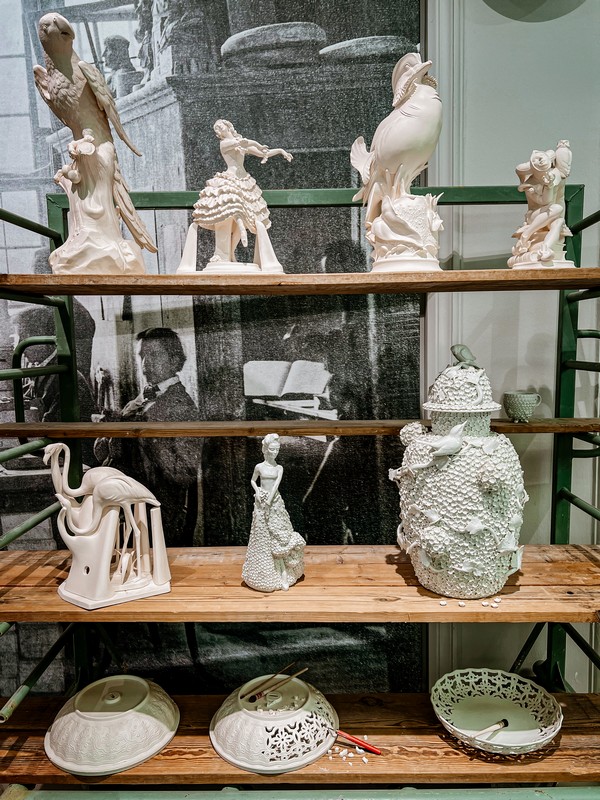

The manufacTOUR
If you want to get even more involved and are looking for something more than a brief overview, the Meissen Factor also offers a 2 hour program with more comprehensive insights into the manufacturing and production. This opportunity is limited to just 10 people but a great opportunity if you want to do a deep dive into Meissen porcelain.
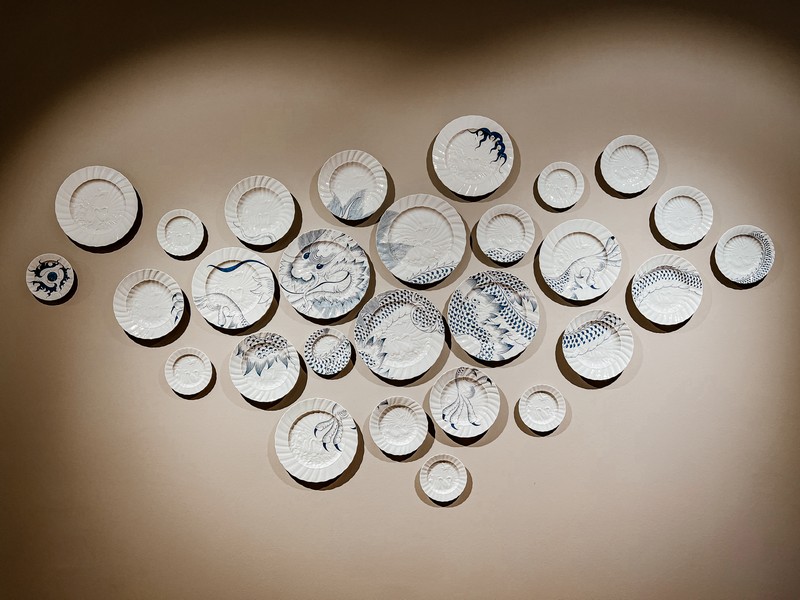
The Meissen House Museum
After going through the workshop and before the Meissen shop calls your name, go upstairs to the museum to see works from the 300 year history of Meissen. There are some stunning works to see in their collection. It’s the perfect final spot in the workshop tour, before you decide what piece you want to have in your collection.
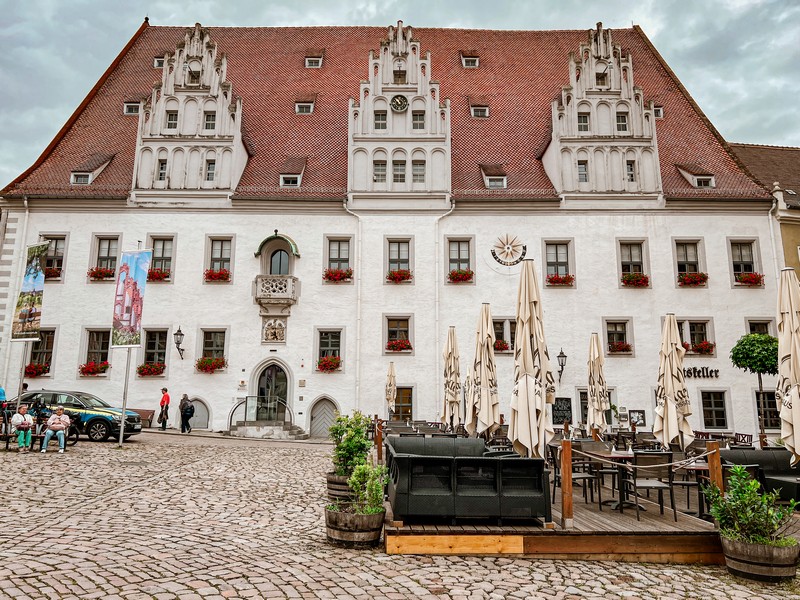


What Else To Do In Meissen
After visiting the House of Meissen, if you have more time, head to Meissen Markt where you can find a number of nice cafes and restaurants across from the town hall. While you’re there, be sure to look up to see the Meissen porcelain bells that hang in the Frauenkirche Miessen. The bells have been there since 1929 and are the first playable orchestral bells made by Meissen Porcelain.
Did you like this post? Pin iT!
